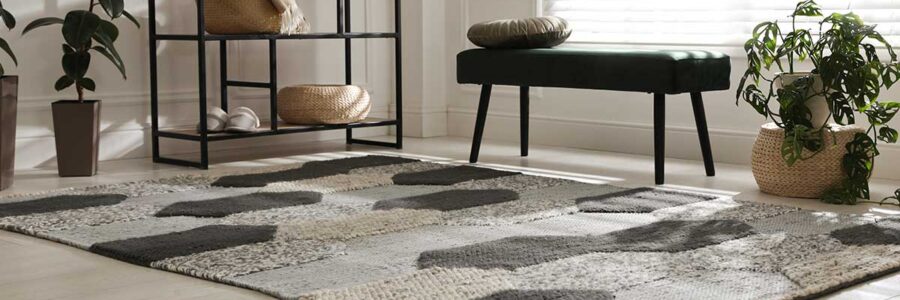Rugs and carpets add warmth and comfort to homes but can also conceal hidden dangers that pose serious health risks. One of the primary concerns is the type of padding or underlayment used beneath these rugs. Often, these pads are made from recycled plastic, which, despite its environmental benefits, may not be the best choice for a non-toxic home environment.
The Dangers of Recycled Plastic Underlayments
Recycled plastic pads, commonly found beneath rugs and carpets, release microplastics and volatile organic compounds (VOCs) into the indoor environment. Microplastics are tiny plastic particles that can become airborne, easily inhaled, and ingested. VOCs are chemicals that evaporate at room temperature and can have significant health impacts. The main concerns associated with these materials include:
- Hormonal Disruption: VOCs and microplastics can interfere with the body’s endocrine system, potentially leading to hormonal imbalances.
- Respiratory Issues: Inhalation of these particles can cause respiratory irritation, leading to asthma and bronchitis.
- Allergic Reactions: Exposure to these substances can trigger allergic reactions, including skin irritation and respiratory symptoms.
- Carcinogenic Risks: Some VOCs released from plastic underlayments are classified as carcinogens, increasing the risk of cancer with prolonged exposure.
The Issue of Dust Buildup
In addition to the dangers of recycled plastic pads, rugs and carpets can accumulate dust over time. This dust often contains dried skin, dirt particles, and various outdoor pollutants that get tracked into the home. Dust accumulation can exacerbate indoor air quality issues, leading to:
- Inflammation: Dust particles can cause inflammation in the respiratory system, contributing to chronic conditions.
- Allergies: Dust mites and other allergens in accumulated dust can trigger allergic reactions and worsen symptoms in sensitive individuals.
- Breathing Problems: Poor indoor air quality due to dust buildup can lead to breathing difficulties, especially in children and older people.
Safer Alternatives: Felted Wool Pads
Consider replacing recycled plastic pads with 100% felted wool underlayments to mitigate these risks. Felted wool pads offer several advantages:
- Non-Toxic: Felted wool is free from microplastics, VOCs, and harmful adhesives that can release toxins into the air.
- Hypoallergenic: Wool naturally resists dust mites and other allergens, making it a safer choice for those with allergies.
- Eco-Friendly: Wool is a biodegradable, renewable resource that reduces environmental impact.
Best Practices for Maintaining a Healthy Home
In addition to choosing non-toxic underlayments, implementing regular cleaning practices can significantly improve indoor air quality and reduce health risks:
- Regular Vacuuming: Use a vacuum cleaner with a HEPA filter to effectively remove dust and allergens from rugs and carpets.
- Frequent Cleaning: Regularly clean rugs and carpets to eliminate embedded dirt and dust mites.
- Proper Ventilation: Ensure good ventilation in your home to reduce the concentration of airborne particles and VOCs.
- Use Natural Cleaning Products: Opt for natural, non-toxic cleaning products to avoid introducing additional chemicals into your home.
Conclusion
Rugs and carpets, while adding comfort and style to a home, can also be sources of hidden toxins if not properly managed. Recycled plastic pads and dust buildup pose significant health risks, but switching to felted wool underlayments and maintaining regular cleaning routines can mitigate these risks. Making informed choices about the materials used in home furnishings and implementing effective cleaning practices can help create a healthier, safer living environment.
References:
- Campanale, Claudia, et al. “A Detailed Review Study on Potential Effects of Microplastics and Additives of Concern on Human Health.” International Journal of Environmental Research and Public Health, vol. 17, no. 4, Feb. 2020, p. 1212. PubMed Central.


